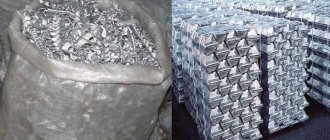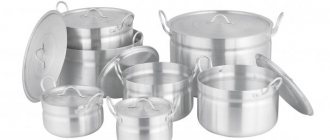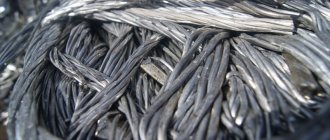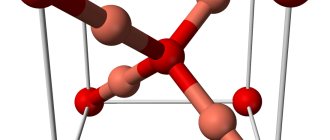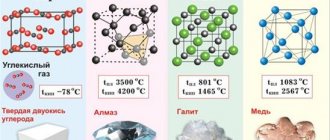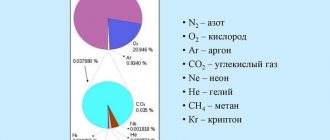Simple substances similar to metal elements in structure and a number of chemical and physical parameters are called amphoteric, i.e. these are those elements that exhibit chemical duality. It should be noted that these are not metals themselves, but their salts or oxides. For example, oxides of some metals can have two properties: under some conditions they can exhibit properties inherent in acids, while under others, they behave like alkalis.
The main amphoteric metals include aluminum, zinc, chromium and some others.
The term amphotericity was coined at the beginning of the 19th century. At that time, chemical substances were separated based on their similar properties, manifested in chemical reactions.
Basic concept of amphotericity
What metals and non-metals are is not difficult to understand. Metals have reducing properties and give up electrons in a chemical reaction. At the same time, metal hydroxides are bases. Nonmetals, on the other hand, are oxidizing agents and take away electrons. Non-metal hydroxides are acids.
Source
Amphoteric compounds can exhibit both oxidizing and reducing properties depending on the reaction medium. Hydroxides of such atoms can act as acids or bases.
Receipt
To obtain amphoteric metals, scientists use the same process used to isolate water-insoluble bases. Before carrying out work, it is necessary to obtain more information about the interaction of amphoteric compounds with alkalis, since metal will be released with the help of an alkaline solution.
Examples:
- To obtain zinc hydroxide, you need to mix a solution of zinc sulfate with sodium hydroxide.
- To obtain aluminum hydroxide, you need to mix a solution of aluminum sulfate with a solution of potassium hydroxide.
- To obtain trivalent hydroxides of chromium and aluminum, you need to mix a carbonate solution with a solution based on salts of these metals.
Aluminum hydroxide
Location of amphoteric elements in the periodic table
In the periodic table, the position of a particular atom provides a significant part of the information about the structure of the atom of this element and its chemical properties. This system is called periodic because a certain quality of elements is repeated in different periods (horizontal lines) and groups (vertical columns). So, the entire first group is alkali metals, the seventh is halogens (non-metals), the eighth is inert gases. But this is typical only for the main subgroup. The side group contains amphoteric elements.
Atomic structure of amphoteric elements
The peculiarity of the chemical properties of amphoteric elements is associated with the structure of their atoms. They pre-fill the s-sublevel, because of this, the d-sublevel is always unfilled. All representatives of side subgroups are p- or d-elements. Under various conditions, a jump of electrons from sublevels and an increase in unpaired electrons can occur.
Table. Atomic structure of some amphoteric elements
Some of them are characterized by electron leakage. This is a state in which an electron from the last level jumps to the next. For this reason, the s-electron turns out to be unpaired.
Examples of amphoteric hydroxides
The following hydroxides are amphoteric:
most d-element hydroxides:
chromium(III)hydroxideCr(OH)3{\displaystyle {\mathsf {Cr(OH)_{3}}}}, iron(III) oxide polyhydrate Fe(OH)3{\displaystyle {\mathsf {Fe(OH) )_{3}}}}, copper(II) hydroxide Cu(OH)2{\displaystyle {\mathsf {Cu(OH)_{2}}}}, zinc hydroxide Zn(OH)2{\displaystyle {\ mathsf {Zn(OH)_{2}}}}, cadmium hydroxide Cd(OH)2{\displaystyle {\mathsf {Cd(OH)_{2}}}},
and etc.;
series of p-element hydroxides:
aluminum hydroxide, Al(OH)3{\displaystyle {\mathsf {Al(OH)_{3}}}}, gallium hydroxide, Ga(OH)3{\displaystyle {\mathsf {Ga(OH)_{3} }}}, tin(II) oxide hydrate, Sn(OH)2{\displaystyle {\mathsf {Sn(OH)_{2}}}}, lead(II) hydroxide Pb(OH)2{\displaystyle {\ mathsf {Pb(OH)_{2}}}},
and etc.;
from hydroxides of s-elements:
beryllium hydroxide Be(OH)2{\displaystyle {\mathsf {Be(OH)_{2}}}};
Formally, water can be classified as amphoteric hydroxides.
Representatives of amphoteric elements
All elements of side groups are amphoteric and exhibit similar chemical properties. The three most common elements in nature are Al, Zn and Cr.
Zinc as an amphoteric element
Zinc is a relatively soft, light gray metal. It is one of the most common amphoteric elements. In nature, zinc is found in 66 minerals, the most common are presented in the table.
Table. Minerals containing Zn
Zinc is a d-element.
1s22s22p63s23p63d104s2
The chemical properties of zinc are due to the presence of an unfilled p-habitat. An electron jumps from the s-sublevel, due to which two unpaired electrons appear: Zn* 1s22s22p63s23p63d104s14p1.
Aluminum as an amphoteric element
Al is the most common element not only among metals, but also in the entire periodic table. It ranks 3rd after oxygen (O2) and silicon (Si).
It is a soft, silver-gray substance with a low melting point. It occurs in nature both in the form of minerals and in the form of nuggets. It is an admixture of many minerals.
The most common minerals containing Al are:
- Augite ((Ca,Na)(Mg,Fe,Al,Ti)(Si,Al)2O6)
- Bauxite (Al2O3xH2O)
- Nepheline (Eliolite) ((NaK)AlSiO4)
- Alunite (K2SO4Al2(SO4)3 4Al(OH)3)
- Sillimanite ((Al2O3)(SiO2))
- Corundum (Al2O3)
The latter mineral has a different color depending on the impurities. It is used in jewelry and is considered a semi-precious stone.
Its atom contains 13 electrons distributed over 3 electronic levels: 1s22s22p63s23p1. This is a p-element in which an electron can transition from the s-sublevel to a free p-orbital. Due to this, the metal acquires 3 unpaired electrons: Al* 1s22s22p63s13p2
What elements are amphoteric?
Compounds that exhibit chemical duality are called amphoteric. They are divided into 3 groups:
- Oxides – Cu2O, Cr2O, PbO2, PbO, SnO
- Hydroxides - Al(OH)3, Fe(OH)3, Zn(OH)2.
The third group includes metals - aluminum, copper, iron, zinc, beryllium, lead, etc. They occupy a significant part in the periodic table of Mendeleev and are under serial numbers - 22–32, 40–51. Others go separately.
Representatives of metals:
- Iron. Belongs to the group of amphoteric. It is a simple substance. Characteristic properties: silver-white color, malleability, versatility. If you place iron in pure oxygen, it will burn out completely, and if you make it finely dispersed, spontaneous combustion may occur in the open air. Iron oxide is formed when it burns in an environment saturated with pure oxygen. It is scale.
- Aluminum. When exposed to air, it is coated with a durable oxide film that protects it from rust. If you crush it into small particles, it begins to interact with oxygen. Upon contact with oxygen, a large amount of heat is released. If you heat aluminum to 200°C, it begins to react with sulfur. As a result of this reaction, aluminum sulfide is formed.
Amphoteric metals are simple elements that are analogues of a group of metallic-type substances. Similarities can be seen in chemical and physical properties.
Properties of the metals Al and Zn as simple substances
Zinc is a fairly dense metal. It retains its qualities in a small temperature range: at low temperatures (up to -30) it becomes brittle, at temperatures above 1000 C it is very plastic. This is used in metallurgy by rolling zinc sheets a few millimeters thick (zinc foil). Some impurities dramatically increase the fragility of the metal, so purified material is used.
Al is a highly ductile light metal with a low melting point. It has high malleability and electrical conductivity.
In air it is covered with an oxide film and therefore practically does not corrode. Due to this, it is used in the manufacture of wires and machinery housings.
Where are amphoteric metals used?
Areas of application:
- Manufacturing of parts for seismic and speed sensors, clock mechanisms, torque.
- Production of parts for equipment that will interact with aggressive factors.
- Reinforcement of high pressure pipes.
- Shipbuilding, aircraft construction.
- Production of household appliances and tools. These include cutlery, tape measures, razor blades, and kitchen utensils.
- Assembly of video recording equipment.
Every year more and more chemical compounds appear. Thanks to this, new amphoteric metals are discovered. They are called materials of the future, but their popularity is growing slowly. This is due to the high cost and small size of finished products.
Production of aluminum and zinc
The main method of obtaining metals is their isolation from ore. For this purpose, the rock richest in metal is used. Aluminum is obtained from bauxite. This process consists of three stages:
- Rock mining;
- Enrichment (increasing metal concentration due to purification from impurities);
- Isolation of a pure substance by electrolysis.
Zinc is produced by several methods - electrolytic (as well as Al) and pyrometallurgical. The second method is based on the reduction of zinc from its oxide with carbon or carbon monoxide II (carbon monoxide):
ZnO + C ⇄ Zn + CO
ZnO + CO ⇄ Zn + CO2
The advantage of this method is that the products of the first reaction can be used in the second, which reduces the amount of emissions into the atmosphere.
How to find metals and non-metals
Determination of metals by theoretical method
Theoretical method:
- All metals, with the exception of mercury, are in a solid state of aggregation. They are flexible and bend without problems. Also, these elements have good thermal and electrical conductive properties.
- If you need to determine a list of metals, then draw a diagonal line from boron to astatine, below which the metal components will be located. These also include all elements of side chemical groups.
- In the first group, the first subgroup contains alkaline ones, for example, lithium or cesium. When dissolved, we form alkalis, namely hydroxides. They have an electronic configuration of the ns1 type with one valence electron, which, when given away, leads to the manifestation of reducing properties.
The second group of the main subgroup contains alkaline earth metals such as radium or calcium. At ordinary temperatures they have a solid state of aggregation. Their electronic configuration is ns2. Transition metals are located in secondary subgroups. They have variable oxidation states. In lower degrees basic properties are manifested, intermediate degrees reveal acidic properties, and in higher degrees amphoteric properties.
Theoretical definition of non-metals
First of all, such elements are usually found in a liquid or gaseous state, sometimes in a solid state . When you try to bend them, they break due to their fragility. Nonmetals are poor conductors of heat and electricity. Nonmetals are found at the top of the diagonal line drawn from boron to astatine. Nonmetal atoms contain a large number of electrons, which makes it more profitable for them to accept additional electrons than to give them away. Non-metals also include hydrogen and helium. All non-metals are located in groups from the second to the sixth.
Chemical methods of determination
There are several ways:
- It is often necessary to use chemical methods for determining metals. For example, you need to determine the amount of copper in an alloy. To do this, apply a drop of nitric acid to the surface and after a while steam will appear. Blot the filter paper and hold it over the ammonia flask. If the spot turns dark blue, this indicates the presence of copper in the alloy.
- Let's say you need to find gold, but you don't want to confuse it with brass. Apply a concentrated solution of nitric acid to the surface in a ratio of 1 to 1. Confirmation of a large amount of gold in the alloy will be the absence of reaction to the solution.
- Iron is considered a very popular metal. To determine it, you need to heat a piece of metal in hydrochloric acid. If it is really iron, then the flask will turn yellow. If chemistry is a rather problematic topic for you, then take a magnet. If it is really iron, then it will be attracted to the magnet. Nickel is determined using almost the same method as copper, only add dimethylglyoxin to the alcohol. Nickel will confirm itself with a red signal.
Other metal elements are determined using similar methods. Just use the necessary solutions and everything will work out.
Chemical properties of aluminum and zinc
Both substances are capable of reacting like ordinary metals. There are also a number of specific reactions.
Interaction with non-metals
Both substances interact with nonmetals to form binary compounds – salts. As a rule, the reaction rate and conditions depend on the activity of the nonmetal. So, the reaction with oxygen is the formation of an oxide when heated with zinc:
2Zn + O2 = 2ZnO
with aluminum under normal conditions:
4Al + 3O2 = 2Al2O3
Aluminum oxide covers the product with a dense film (oxide film) and the access of oxygen is stopped, therefore, for a complete reaction it must be taken in powder.
Zn does not react with Br, N2, Si, C, H2.
Al does not react with H2 alone.
Interaction with metals
With reducing agents, both metals form alloys:
- Aluminides CuAl2, CrAl7, FeAl3
- Brass ZnCu
This is not a chemical reaction because there is no transfer of electrons or change in the chemical properties of the substances.
Interaction with acids and alkalis
Both aluminum and zinc react with acids under normal conditions to form salts:
8Al + 30HNO3 = 8Al(NO3)3 + 3N2O + 15H2O;
2Al + 6HCl = 2AlCl3 + 3H2;
Zn + 2HCl = ZnCl2 + H2;
Zn + H2SO4 = ZnSO4 + H2.
The result of a reaction with alkalis depends on the reaction conditions: if the reaction occurs in solution (in the presence of water), then complex salts are formed:
2Al + 2NaOH + 10H2O = 2Na[Al(H2O)2(OH)4] + 3H2;
Zn + 2NaOH + 2H2O = Na2[Zn(OH)4] + H2.
In an anhydrous environment (fusion), salts of metallic acids are formed:
Zn + 2KOH = K2ZnO2 + H2 (K2ZnO2 – potassium zincate);
2Al + 6KOH = 2KAlO2 + 2K2O + 3H2 (KAlO2 – potassium aluminate).
Interaction with water
Aluminum actively interacts with water if the oxide film is cleaned. The reaction must be carried out quickly, since a film is formed almost instantly:
2Al + 6H2O = 2Al(OH)3 + 3H2;
Zn reacts with water at very high temperatures (when incandescent to red):
Zn + H2O = ZnO + H2.
Interaction of oxides with acids
Basic and amphoteric oxides react with acids. In this case, salts and water are formed:
FeO + H2SO4 = FeSO4 + H2O
Non-salt-forming oxides do not react with acids at all, and acidic oxides do not react with acids in most cases.
When does an acidic oxide react with an acid?
When solving the multiple-choice part of the Unified State Exam, you should conditionally assume that acidic oxides do not react with either acidic oxides or acids, except in the following cases:
1) silicon dioxide, being an acidic oxide, reacts with hydrofluoric acid, dissolving in it. In particular, thanks to this reaction, glass can be dissolved in hydrofluoric acid. In the case of excess HF, the reaction equation has the form:
SiO2 + 6HF = H2[SiF6] + 2H2O,
and in case of HF deficiency:
SiO2 + 4HF = SiF4 + 2H2O
2) SO2, being an acidic oxide, easily reacts with hydrosulfide acid H2S according to the type of coproportionation:
S+4O2 + 2H2S-2 = 3S + 2H2O
3) Phosphorus (III) oxide P2O3 can react with oxidizing acids, which include concentrated sulfuric acid and nitric acid of any concentration. In this case, the oxidation state of phosphorus increases from +3 to +5:
| P2O3 | + | 2H2SO4 | + | H2O | =to=> | 2SO2 | + | 2H3PO4 |
| (conc.) |
| 3P2O3 | + | 4HNO3 | + | 7H2O | =to=> | 4NO↑ | + | 6H3PO4 |
| (detailed) |
| P2O3 | + | 4HNO3 | + | H2O | =to=> | 2H3PO4 | + | 4NO2↑ |
| (conc.) |
4) Sulfur oxide (IV) SO2 can be oxidized with nitric acid taken in any concentration. In this case, the oxidation degree of sulfur increases from +4 to +6.
| 2HNO3 | + | SO2 | =to=> | H2SO4 | + | 2NO2↑ |
| (conc.) |
| 2HNO3 | + | 3SO2 | + | 2H2O | =to=> | 3H2SO4 | + | 2NO↑ |
| (detailed) |
Zinc and aluminum oxides
ZnO is an oxide widely used in the chemical industry. It is used to obtain salts. In reaction with alkalis, complex salts are formed that are easily destroyed by acids.
Al2O3 – alumina. It has a very dense crystal lattice, which is why it practically does not react under normal conditions. At extremely high temperatures it reacts with alkalis:
Al2O3 + 2KOH = 2KAlO2 + H2O
May react with boiling acids to form complex salts.
Application of aluminum and zinc
Al, as the most common element, is widely used in the chemical industry. It is capable of displacing reducing agents from compounds, therefore it is used for the production of metals. This method is called aluminothermy.
Due to the oxide film and low density, it is used in automobile, aircraft and rocket production to reduce the weight of the product. In construction, aluminum is used to make frames for high-rise buildings.
Zn is used to reduce corrosion of metal products – galvanizing. The powder of this metal is used to make oil paints with a metallic sheen. Also, the oxide serves as an antiseptic. Ointments based on zinc powder are used in the treatment of lichen and other infectious skin lesions.
Examples of amphoteric hydroxides
The following hydroxides are amphoteric:
most d-element hydroxides:
chromium(III)hydroxideCr(OH)3{\displaystyle {\mathsf {Cr(OH)_{3}}}}, iron(III) oxide polyhydrate Fe(OH)3{\displaystyle {\mathsf {Fe(OH) )_{3}}}}, copper(II) hydroxide Cu(OH)2{\displaystyle {\mathsf {Cu(OH)_{2}}}}, zinc hydroxide Zn(OH)2{\displaystyle {\ mathsf {Zn(OH)_{2}}}}, cadmium hydroxide Cd(OH)2{\displaystyle {\mathsf {Cd(OH)_{2}}}},
and etc.;
series of p-element hydroxides:
aluminum hydroxide, Al(OH)3{\displaystyle {\mathsf {Al(OH)_{3}}}}, gallium hydroxide, Ga(OH)3{\displaystyle {\mathsf {Ga(OH)_{3} }}}, tin(II) oxide hydrate, Sn(OH)2{\displaystyle {\mathsf {Sn(OH)_{2}}}}, lead(II) hydroxide Pb(OH)2{\displaystyle {\ mathsf {Pb(OH)_{2}}}},
and etc.;
from hydroxides of s-elements:
beryllium hydroxide Be(OH)2{\displaystyle {\mathsf {Be(OH)_{2}}}};
Formally, water can be classified as amphoteric hydroxides.
Aluminum and zinc alloys
In metallurgy, they are practically not used in their pure form due to their high plasticity. In order to preserve the advantages of metals, but remove the disadvantages, alloying with other metals is carried out.
Aluminum alloys
Aluminum alloys are divided into two groups:
- Foundry (without maintaining plasticity);
- Structural (deformable).
Table. Characteristics of the main aluminum alloys
